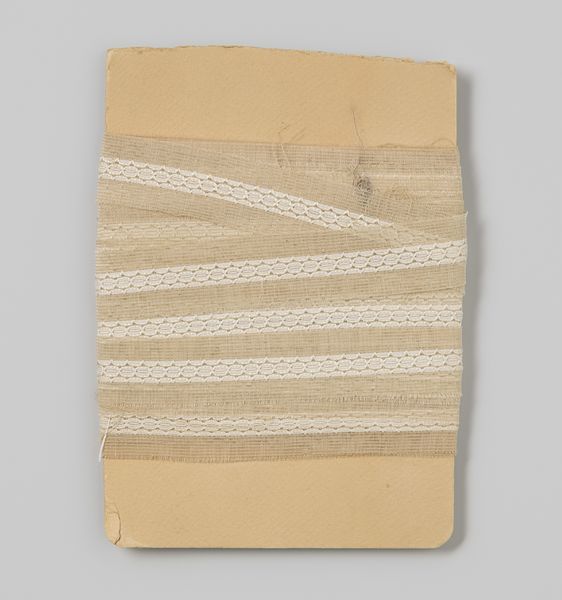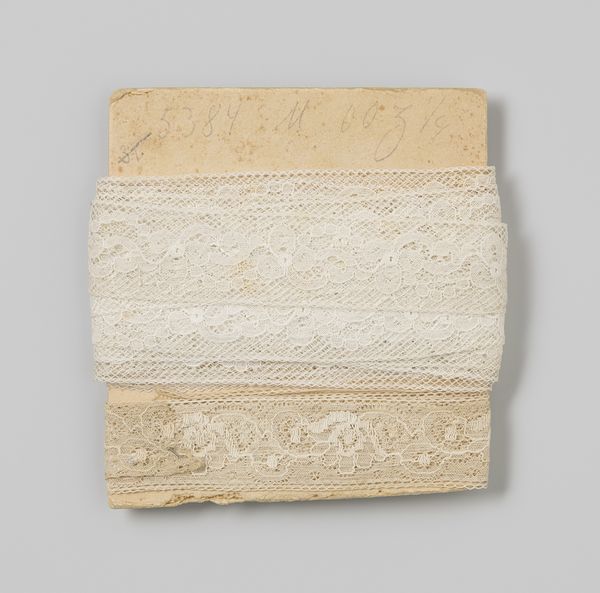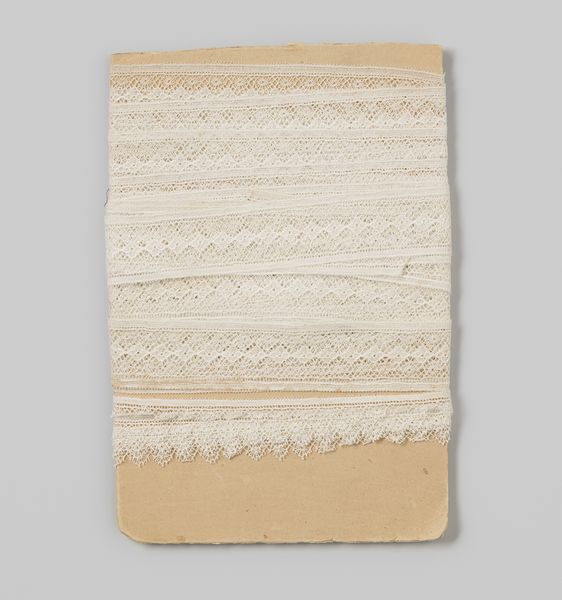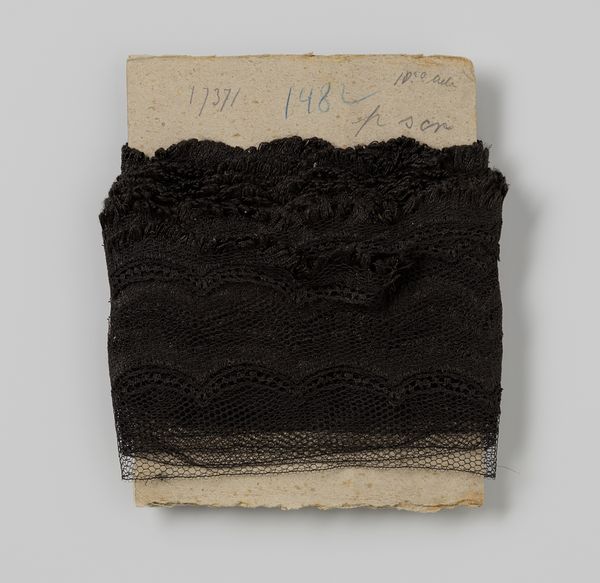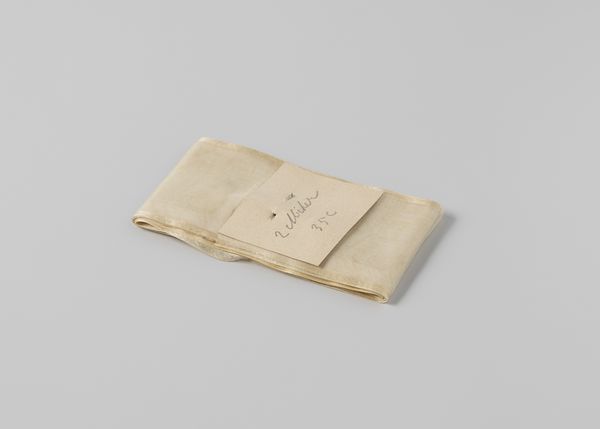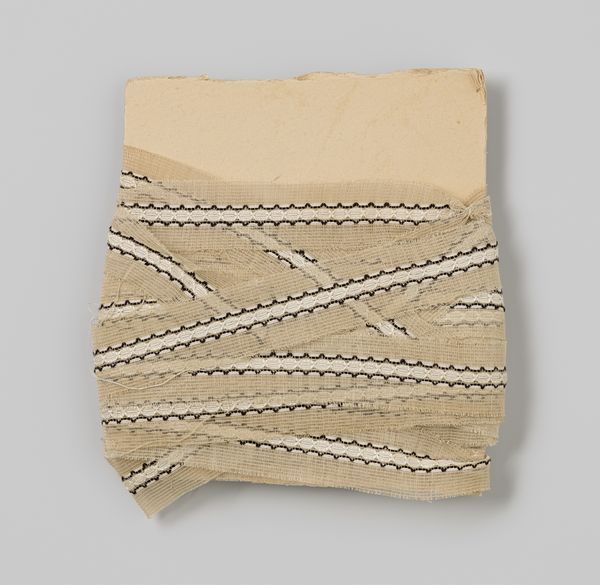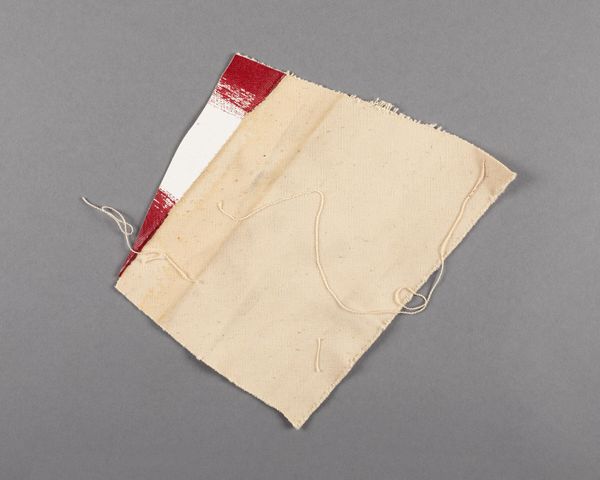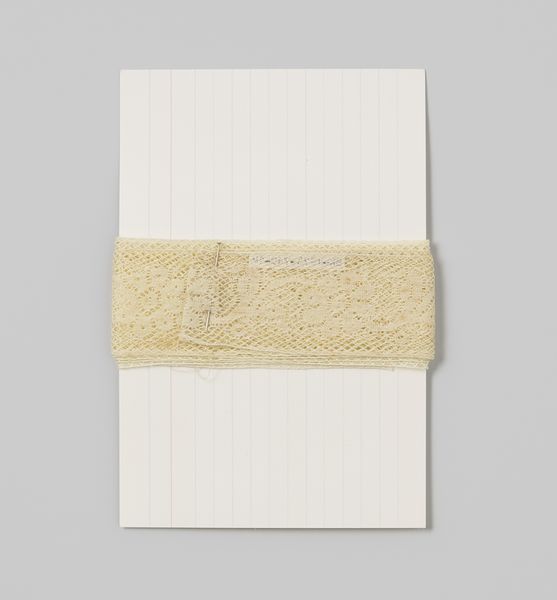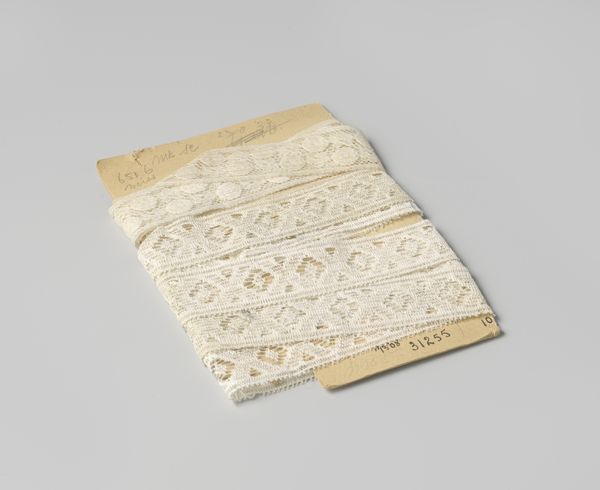
weaving, textile, photography
#
still-life-photography
#
weaving
#
textile
#
photography
#
fiber-art
Dimensions: width 4 cm, length 18 cm, width 17.8 cm, height 3 cm
Copyright: Rijks Museum: Open Domain
Curator: Looking at this image, I immediately think of fragility and detail, something precious and meticulously crafted. Editor: Indeed. What we have here is a photograph of what's described as a length of white lace with a continuous wavy pattern, dating from around 1920 and part of the Rijksmuseum collection. It’s classified as both weaving and textile work but is presented to us as a still-life photograph. The choice of presentation is striking. Curator: It’s fascinating how this everyday object transforms into something evocative through the photographic lens. Lace has historically been connected to women's work and domesticity. Photographing it elevates and questions the status of women and this labor through a contemporary theoretical lens. What statements might we make about labor when we think of art such as this? Editor: For me, lace carries such strong cultural weight. Beyond domesticity, I immediately think of bridal wear and religious garments. That delicate weave speaks of purity and ritual—associations which likely endure over centuries of visual representations. Consider the symbolism imbued in lace within paintings of saints or the adornment of royal figures. The lace becomes an important element in communicating status and veneration through an image. Curator: And there’s tension. We see this exquisite, carefully created material presented on a cardboard form with a shipping label—rough utilitarian textures combined with softness and intricate labor. The presentation critiques systems of class and value perhaps. Who had access to this material? Who created it? What socioeconomic forces were at play? Editor: I agree. Even the wavy pattern suggests symbolic movement— perhaps a visual representation of trade routes and connections across geographic locations as luxury commodities. We've discussed this artifact's relation to commerce. What value might be represented on that partially obscured label? Curator: Posing those important questions helps connect this material artifact with present discussions around global labor practice. Thanks for allowing a chance for that vital contextualization. Editor: It is the photograph and this dialogue that makes visible those lingering cultural echoes so beautifully.
Comments
No comments
Be the first to comment and join the conversation on the ultimate creative platform.
